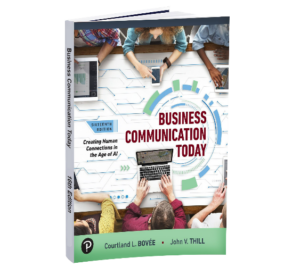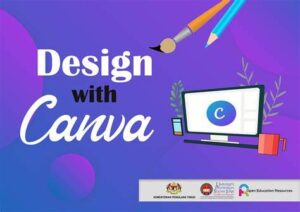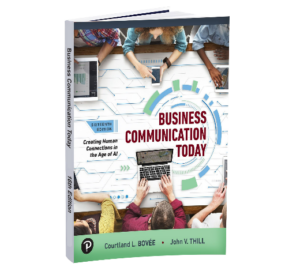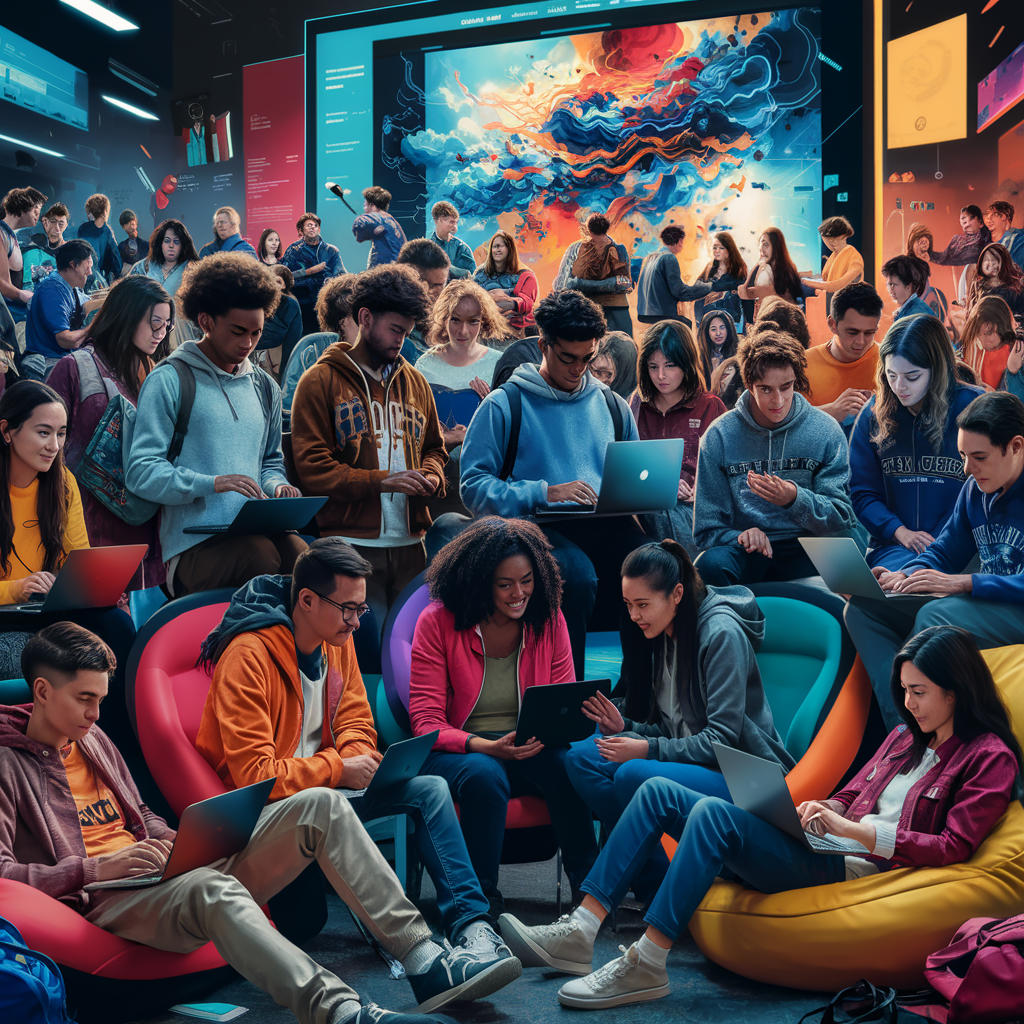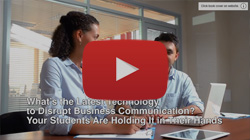
Are you unknowingly holding your students back? Discover how to overcome the common blind spots in business communication instruction— from outdated methods to overlooked skills like storytelling and digital literacy— and equip your students with the tools they need to succeed in today’s evolving business world.
In the ever-evolving world of business, effective communication is a key driver of success. Yet, despite advancements in communication technologies and practices, many instructors of business communication still rely on outdated approaches, often without realizing it. These collective blind spots—ranging from an overemphasis on traditional methods to neglecting key skills like storytelling, digital literacy, and cross-cultural communication—can hinder students from developing the well-rounded abilities needed to thrive in today's dynamic business landscape.
This article highlights 30 common blind spots in teaching business communication, explaining why they exist and offering actionable solutions to overcome them. From integrating visual storytelling and digital tools to addressing power dynamics, ethical communication, and personal branding, these insights aim to help educators create more practical, relevant, and engaging curricula. By addressing these blind spots, instructors can better prepare students to meet the demands of modern business, equipping them with the versatile communication skills necessary for success in a variety of professional settings.
1. Overemphasis on Traditional Communication Methods
Why It Exists: Many instructors were trained using conventional formats (e.g., memos, formal letters) and may unconsciously prioritize them over modern communication tools.
How to Address: Incorporate contemporary communication methods, such as video conferencing and social media messaging, into the curriculum to reflect current business practices.
2. Neglect of Visual Communication
Why It Exists: Business communication has historically focused on writing and speaking, often ignoring the power of visual storytelling.
How to Address: Encourage the use of infographics, data visualizations, and presentation software to teach students how to convey messages visually.
3. Assuming Written Proficiency
Why It Exists: Instructors may assume students have mastered basic writing skills by the time they reach higher education, overlooking the varying levels of proficiency.
How to Address: Implement writing workshops or diagnostic assessments at the beginning of the course to gauge skill levels and tailor support where needed.
4. Lack of Cultural Awareness
Why It Exists: Instructors may unconsciously teach from a culturally homogenous perspective, assuming communication standards are universal.
How to Address: Introduce discussions and assignments on cross-cultural communication, emphasizing how diverse cultural backgrounds influence communication norms and preferences.
5. Underestimating Digital Literacy
Why It Exists: Older generations of instructors may assume that today’s students are “digital natives” and therefore proficient with all business-related technology.
How to Address: Provide training on tools like collaborative platforms (e.g., Slack, Microsoft Teams) and digital etiquette to ensure students are prepared for the modern workplace.
6. Siloed Approach to Communication
Why It Exists: The curriculum often treats different forms of communication—written, oral, visual—as separate silos rather than integrated components.
How to Address: Develop assignments that require students to integrate multiple forms of communication (e.g., a presentation that combines oral, written, and visual elements).
7. Overlooking Emotional Intelligence
Why It Exists: The traditional business communication curriculum tends to focus on content and form, overlooking the importance of emotional intelligence (EQ) in effective communication.
How to Address: Include lessons and activities focused on empathy, active listening, and managing emotions in workplace interactions.
8. Ignoring the Importance of Feedback
Why It Exists: Some instructors emphasize one-way communication (e.g., presentations) without teaching the value of soliciting and incorporating feedback.
How to Address: Create assignments where students practice giving and receiving constructive feedback to simulate real-world business environments.
9. Failure to Teach Persuasion Techniques
Why It Exists: The curriculum often emphasizes clarity and correctness but overlooks the importance of persuasion in business communication.
How to Address: Teach rhetorical techniques, emotional appeals, and argumentation strategies to help students craft persuasive business messages.
10. Neglect of Crisis Communication
Why It Exists: Many courses focus on routine business communication without preparing students for high-stakes, crisis communication scenarios.
How to Address: Incorporate case studies and simulations on how to handle communication during crises, such as PR disasters or corporate emergencies, to prepare students for unexpected challenges.
By addressing these blind spots, instructors can create a more holistic, relevant, and practical business communication curriculum that better prepares students for real-world challenges.
11. Overemphasis on Grammar and Syntax
Why It Exists: Many instructors prioritize grammatical accuracy, as it's traditionally been seen as a hallmark of professionalism.
How to Address: While grammar is important, shift some focus toward clarity, creativity, and audience engagement. Teach students how to adapt communication styles based on the situation, even if it involves breaking grammatical norms.
12. Limited Focus on Listening Skills
Why It Exists: Business communication classes often emphasize speaking and writing over listening, which is equally critical to effective communication.
How to Address: Incorporate active listening exercises, discussions, and peer feedback sessions to train students in this vital skill for professional interactions.
13. Failure to Address Power Dynamics in Communication
Why It Exists: Power structures in business communication—like hierarchy and authority—are often not discussed, even though they significantly influence how people communicate.

Help students master the art of adapting communication strategies to fit various workplace power dynamics. Incorporate case studies that teach them how to effectively communicate with superiors, collaborate with peers, and lead subordinates in real-world scenarios.
How to Address:
Teach students about how communication strategies need to adapt depending on the power dynamics in different workplace scenarios. Include case studies that focus on navigating communication with superiors, peers, and subordinates.
14. Overlooking Ethical Communication
Why It Exists: The focus tends to be on effective communication, but ethics in communication (e.g., transparency, honesty) is often sidelined.
How to Address: Integrate ethics into the curriculum, exploring how ethical dilemmas can arise in business communication and encouraging students to think critically about their responsibilities as communicators.
15. Insufficient Focus on Adaptability to Audience Needs
Why It Exists: Instructors may not emphasize the need for students to adapt their messages to different audiences, assuming a “one-size-fits-all” approach.
How to Address: Teach students audience analysis techniques and practice tailoring messages for different stakeholders, such as clients, colleagues, or executives.
16. Undervaluing Storytelling as a Communication Tool
Why It Exists: Business communication is often framed as transactional, leaving little room for storytelling, which can be a powerful persuasive tool.
How to Address: Encourage students to use storytelling techniques in their presentations and written assignments to make their messages more engaging and memorable.
17. Failure to Teach Communication in Remote Work Settings
Why It Exists: Traditional business communication teaching is still heavily focused on in-person interactions, even though remote work is increasingly common.
How to Address: Offer modules that focus on virtual communication tools, best practices for remote meetings, and maintaining professional relationships through digital channels.
18. Overreliance on Formal Communication Styles
Why It Exists: The curriculum often emphasizes formal communication styles, which may not reflect the informal, conversational tone used in many modern business environments.
How to Address: Introduce lessons on how to balance formality and informality based on context, particularly when communicating in digital and cross-cultural environments.
19. Underestimating the Role of Nonverbal Communication
Why It Exists: Business communication courses typically focus on verbal and written communication, with little emphasis on nonverbal cues.
How to Address: Incorporate lessons on body language, eye contact, tone of voice, and other nonverbal cues, particularly in professional settings like interviews and meetings.
20. Limited Integration of Social Media Communication
Why It Exists: Social media communication is often seen as less professional or relevant in the context of formal business settings.
How to Address: Recognize the importance of platforms like LinkedIn, Twitter, and even Instagram for business communication. Assign projects that require students to create professional social media content and engage with real-world business conversations.
Addressing these additional blind spots will help students become well-rounded communicators, equipped to handle the evolving demands of modern business environments.
21. Overemphasis on Formality
Why It Exists: Business communication courses often stress formality, assuming it's the standard across all contexts.
How to Address: Teach students how to adapt their tone and level of formality depending on the audience, purpose, and medium, focusing on both formal and informal business communication styles.
22. Neglecting Interpersonal Communication Skills
Why It Exists: Courses often prioritize technical communication skills (e.g., report writing) over interpersonal skills, which are essential in business settings.
How to Address: Incorporate role-playing and real-life scenarios that emphasize interpersonal dynamics, such as negotiation, conflict resolution, and collaboration.
23. Underestimating the Role of Social Media
Why It Exists: Many curricula still focus on traditional communication channels and overlook the widespread influence of social media in the business world.
How to Address: Include assignments and discussions about how social media is used for corporate branding, customer engagement, and crisis management, and teach students best practices for professional use.
24. Failure to Integrate Storytelling
Why It Exists: Business communication often focuses on facts, figures, and clarity, overlooking the persuasive and emotional power of storytelling.
How to Address: Teach students the art of storytelling as a tool for engaging audiences, making data relatable, and building compelling narratives in presentations, pitches, and marketing.
25. Insufficient Focus on Listening Skills
Why It Exists: There’s a tendency to concentrate on how students express themselves, often overlooking the importance of listening as a critical component of effective communication.
How to Address: Implement active listening exercises, encourage reflective listening practices, and assess students' ability to listen and respond thoughtfully in both written and verbal communications.
26. One-Size-Fits-All Communication Strategy
Why It Exists: Instructors may promote a standardized approach to communication, assuming the same strategies work in all business situations.
How to Address: Teach adaptability by exposing students to varied business contexts (e.g., small businesses, multinational corporations, startups) and having them practice tailoring their communication strategies accordingly.
27. Undervaluing Nonverbal Communication
Why It Exists: The curriculum often emphasizes spoken and written communication while giving minimal attention to nonverbal cues, which are critical in face-to-face and video interactions.
How to Address: Include lessons on body language, facial expressions, posture, and tone of voice, and integrate nonverbal communication assessments into presentations or group discussions.
28. Ignoring Ethical Communication Practices
Why It Exists: The focus tends to be on effective communication without thoroughly addressing the ethical dimensions, such as transparency, honesty, and corporate responsibility.
How to Address: Introduce ethical case studies, debates on communication dilemmas, and assignments that require students to analyze and propose ethical communication strategies in challenging business situations.
29. Lack of Emphasis on Real-Time Communication
Why It Exists: The curriculum tends to focus on polished, rehearsed communication forms like reports or presentations, while real-time communication (e.g., meetings, negotiations) is less explored.
How to Address: Include simulations of real-time business interactions, such as impromptu speaking, problem-solving in meetings, and live debates, to help students develop the ability to think and communicate quickly under pressure.
30. Overlooking Personal Branding and Online Presence
Why It Exists: Many courses focus solely on corporate communication, ignoring the importance of students developing their own professional online presence.
How to Address: Teach students the principles of personal branding, how to craft professional profiles on platforms like LinkedIn, and how to manage their digital footprint to enhance their career prospects.
By identifying and addressing these additional blind spots, instructors can create a more well-rounded curriculum that better prepares students to meet the diverse challenges of modern business communication.
Eliminating Blind Spots in Business Communication Instruction with Business Communication Today
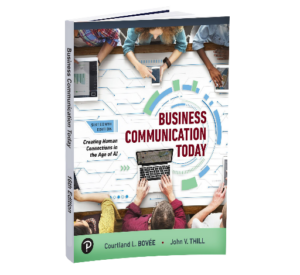
Business Communication Today is an ideal textbook for addressing the collective blind spots commonly found in business communication instruction. This text goes beyond traditional methods, offering a comprehensive and modern approach that aligns with the evolving demands of today’s professional world.
One of the book’s standout features is its integration of contemporary communication tools, including social media, collaborative platforms, and visual communication strategies. By incorporating these elements, the text ensures that instructors move beyond outdated approaches that overemphasize traditional formats while neglecting digital literacy and visual storytelling—critical skills for modern professionals. Additionally, the text underscores the ethical complexities of digital communication, equipping students with the knowledge to navigate today’s technology-driven workplace responsibly.
Business Communication Today also places a strong emphasis on audience adaptation, cultural intelligence, and emotional awareness—areas often overlooked in standard curricula. Its in-depth coverage of cross-cultural communication and emotional intelligence prepares students to excel in diverse, globalized business environments where adaptability and empathy are essential.
Moreover, the textbook employs active learning strategies, including case studies, real-world scenarios, and interactive assignments that develop practical communication skills. These exercises encourage students to integrate written, oral, and visual communication effectively, fostering a well-rounded and applied approach to business communication.
By using Business Communication Today, instructors can ensure they are delivering a balanced, forward-thinking curriculum that addresses both foundational and emerging aspects of business communication—helping students develop the skills they need to thrive in today’s dynamic professional landscape.
Read more